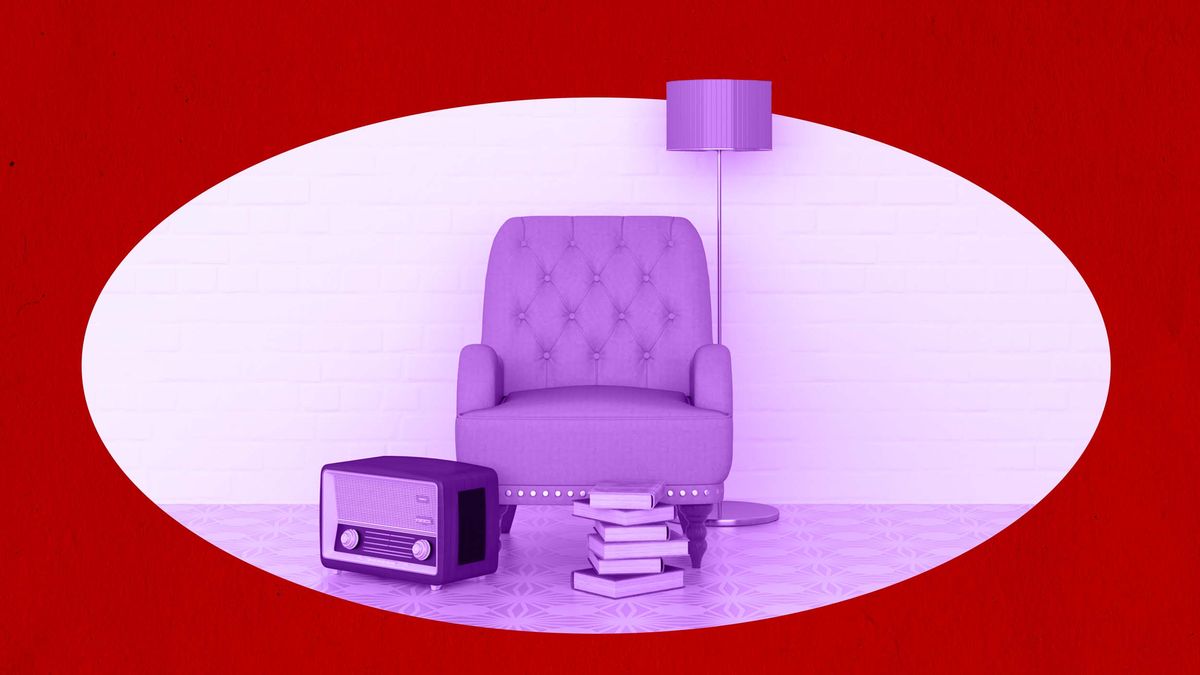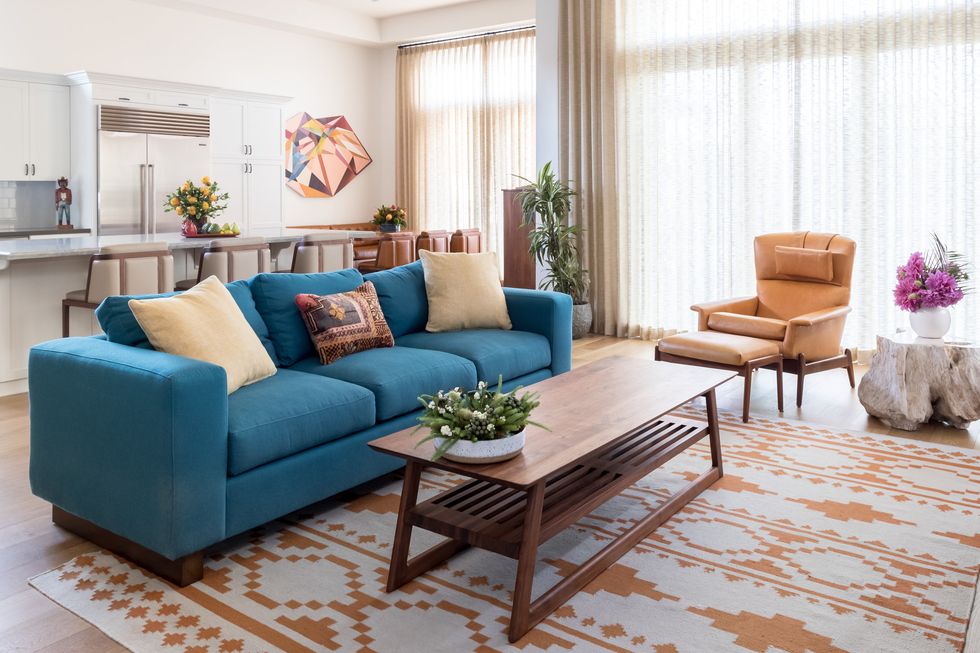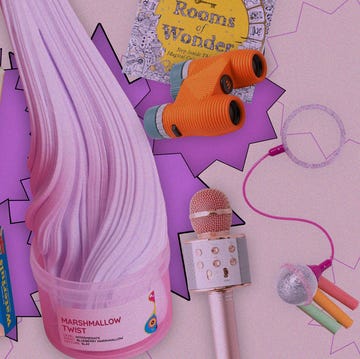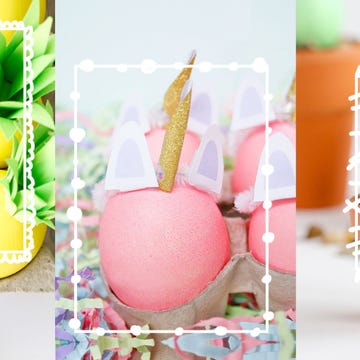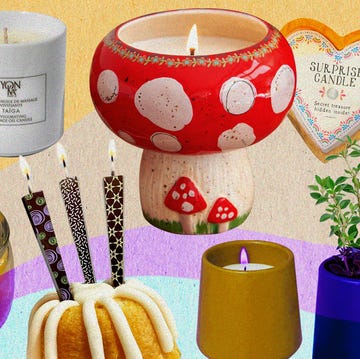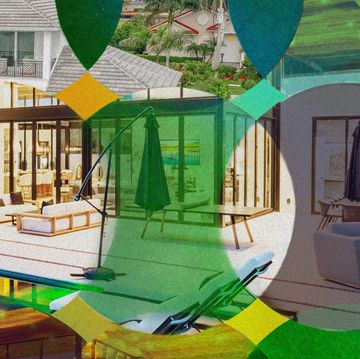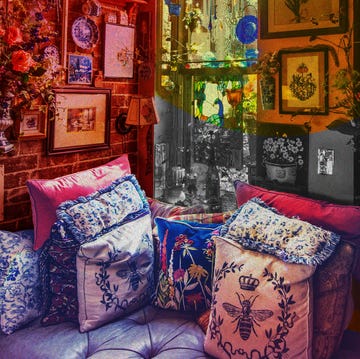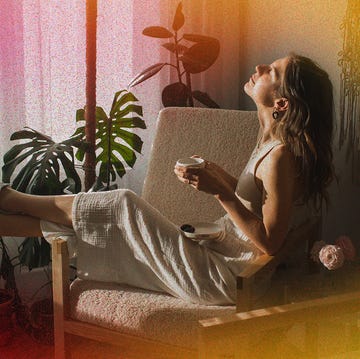In the Shondaland series Reclaiming Home, you’ll learn that home is more than the place to lay your head at night. It’s a space where families gather, memories form, and a sense of calm begins. From joy-sparking plants to aromas that illicit comfy feelings, the ways in which you can maximize and take ownership of your home are varied. So settle in, and let's look at all the ways we make places and spaces our homes.
As individuals, we are all different, and thus so are the places in which we reside. “When you invite someone into your home, you are giving them a sneak peek into who you are, what you are all about, what you are attracted to, and what inspires you,” says Rebecca Cohen-Scharfman, an architectural designer, feng shui consultant, and energetic designer. And when someone’s space aligns with and supports who they are as an individual, that, according to Cohen-Scharfman, is when a house truly becomes a home.
But when it comes to the many ways people personalize a home, there are many different types of philosophies that home dwellers can follow. There’s everything from minimalism, which involves limiting the number of accessories one puts into their environment, to feng shui, where furniture is arranged to create a sense of balance and infuse a sense of harmony into one’s environment. No matter the philosophy behind your home, what’s become clear is that, as home has taken on a whole new meaning and role in our lives over the last two years, the way we choose to live in our spaces has never been more important. Here is a deeper look at some of the different philosophies people follow to make their houses a home.
Feng shui
The Chinese philosophy of feng shui is the most well-known but, according to Amber Dunford, style director at Overstock.com, is often the least understood. “It focuses on creating positive energy in a space by embracing natural elements,” she explains. Natural light is a significant element in feng shui, which dictates that your windows should be the focal point of your design. You can also use living plants to encourage the flow of positive energy in the space and try things like replacing solid and heavy furniture with lighter pieces on legs to further allow energy to flow. “A cluttered space is a cluttered mind, so remove it,” Dunford explains. Focus on symmetry and balance. “Choosing a color palette is slightly more complicated with feng shui,” she adds. “Each color has meaning and an elemental energy connection.” Thus, with feng shui, using color is about creating the desired energy in a room.
Biophilia
This decorating outlook has become more popular in recent years. “Biophilia is our innate affinity to nature,” explains interior consultant and well-being coach Juan Sandiego. “In essence, embracing biophilia at home means focusing on natural textures and materials such as wood, adding plenty of greenery in every room, and allowing natural light to flood the space.” This concept has been successfully applied to environments from hospitals and offices to hotels and homes. “Introducing biophilic design elements in your home has been proved to be positive for your physical and mental health,” says Sandiego.
Shapes and colors
“Shapes and colors have conscious and subconscious associations that can help to create a feeling or experience,” says Sarah Barnard, a WELL- and LEED-accredited designer and the creator of environments that support mental, physical, and emotional well-being. Organic, rounded shapes, for instance, may offer a dreamy or calming feeling, and many of Barnard’s clients are currently drawn to the comfort of furnishings with plush, rounded edges. Forms with rectangular corners, on the other hand, may have a cleaner, more efficient feeling that can inspire a sense of order and productivity. Similarly, colors can inspire an emotional response, says Barnard. Greens and earth tones, for example, often inspire a grounded feeling and a connection to nature, while bright, warm tones like yellow and pink may encourage feelings of happiness, bringing brightness to social spaces.
Minimalism
Minimalist design focuses exclusively on necessities, making the most out of the minimum. This, says Barnard, can be great for improving visual stress in the home. Minimalism offers maximum visual space for the eye to rest and few distractions, supporting focus and creativity. “That said, minimalist design can be incredibly dynamic and engaging,” Barnard explains. “Because there are often fewer items present, furnishing and objects have space to shine.” Opting for beautiful materials and expertly crafted furniture can make a minimalist space feel like a work of art.
A great way to tiptoe into the concept of minimalism is through the Kondo method of getting rid of things that don’t “spark joy,” which is outlined in Marie Kondo’s best-selling book The Life-Changing Magic of Tidying Up. “Don’t confuse want with need,” says Brooklyn-based interior designer Jarret Yoshida. “And if you don’t need something in your house, give it to someone who does.”
Reflecting your culture in your home
“Homes should feel like an extension of the people who live there, and many find comfort and a sense of self in spaces that incorporate their culture, personal ethos, and moral beliefs,” Barnard explains. Designing with these elements in mind may mean using objects or pieces that have been passed down and contain family history or selecting materials or furnishings with a traditional foundation. “In some cases, homes may reflect personal beliefs through the materials chosen, whether specifying vegan items for someone living a vegan lifestyle or investing in companies with ethical labor practices,” Barnard adds.
Hygge
Hygge is a Danish philosophy that’s associated with Scandinavian interior design. “Its focus is on creating a cozy and comfortable space to be,” says Andra DelMonico, the lead interior designer for Trendey. To enact this philosophy, people use soft, warm lighting, touchable fabrics that are associated with being warm, and simplified furniture. “There’s a cleanness to the furniture design, with minimal ornamentation,” says DelMonico. “The color palette is one that uses soft, neutral, and earthy colors.” This, she says, doesn’t mean using pastel but instead muted colors — from grays to greens and earthy rust browns or blues.
Personal mementos
Keepsakes, souvenirs, and photographs help to make a house feel truly like your own space and are essential to making a place feel lived in. “When I moved into my current home, the first thing I did was put all our personal photos on display,” explains Jennifer Baptista, a spiritual realtor and Fresh Starts Registry expert. “Literally not a single box was unpacked, but ‘Hey, let me hang these newborn photos really quick,’” she says. This gave Baptista a sense of instant calm and ownership over her new environment.
Self-care setups
Self-care is important to help you feel balanced, healthy, and happy, and that doesn’t have to be limited to diet, exercise, and mental health. You can set up your home to be a conducive space for relaxing and recharging. “Your home can be your place of worship, your gym, and your favorite restaurant all in one,” says Baptista. In her home, Baptista has multiple altars and places of remembrance. “My porch is my private space where I do reiki, meet with clients, and read people’s tarot cards,” she explains. She has a small corner in the living room where she meditates and relaxes. She also keeps crystals throughout the space, especially in the windows to help enrich the positivity, love, and abundance for herself and her family.
Aspirational spaces
“While spaces should reflect the residents’ personalities, they can also help encourage habits and behaviors in line with personal goals,” explains Barnard. From artwork on the walls to a studio space with ample natural light, there are many ways that design can encourage and support lifestyle goals and habits. Barnard helps clients bring more movement into their lives by crafting home layouts that “support their goals through open flows of traffic, which creates many options for standing activities like working, eating, or exercise. If someone is looking to prioritize creativity in their lives, creating opportunities to foster innovation and imagination throughout the home may help incorporate creative actions into the day,” she explains.
Functionality
Traditionally, living rooms are for relaxing, and dining rooms are for entertaining. But nowadays, people are putting exercise bikes behind couches and desks in their family rooms. Making a home functional is becoming just as important as making it aesthetically pleasing. “I recently designed a home for an extroverted vegan family who loves socializing and hosting,” explains Barnard. “They wanted to create a consciously designed room that could function as a slumber-party space so guests would feel comfortable staying overnight in a large group.” She adds that other people may use extra rooms to support their hobbies and passions so they can better enjoy time at home. “The best unique home designs happen when clients reflect deeply and genuinely on their ideal day-to-day experiences and design their homes in a way that supports that,” Barnard says.
Design for intuitive living
“The functions of a properly designed home should operate almost unnoticeably in the background,” says Barnard. Ideally, she adds, there will never be an issue finding a light switch or squeezing by someone washing dishes to open the fridge. And the traffic flow and ease of use should be so seamless that it’s barely thought about day to day. To design intuitively, Barnard says to examine your daily habits and make design choices that support those experiences. If you find yourself standing up while eating your breakfast, for instance, incorporate a higher table or counter in your kitchen or dining space as a small way to improve your daily life. “Small experiences add up when designing an ideal living space,” says Barnard.
Nicole Pajer is a freelance writer who has contributed to The New York Times, AARP, Woman’s Day, Parade, Men’s Journal, Wired, and Emmy Magazine. Follow her on Twitter @nicolepajer.
Get Shondaland directly in your inbox: SUBSCRIBE TODAY
